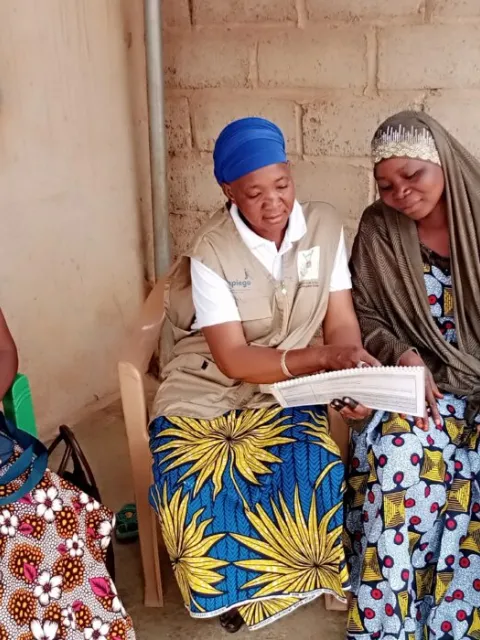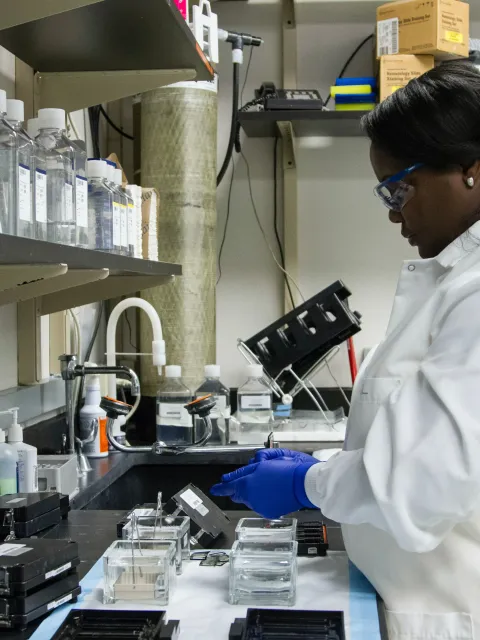How to reduce inequities in cancer care
There is much that governments, organisations and individuals can do to reduce inequity and ensure that affordable, quality care is enjoyed by all populations.

The barriers that prevent people from effectively accessing cancer services, known as the “social determinants of health and cancer” are wide-ranging and lead to significant disparities in cancer incidence and survival rates.
These barriers encompass factors that range from a lack of reliable information on cancer risks to a lack of diagnostics or treatment capacity. People around the world die of a preventable cancer because they live too far from health facilities, have too little money, suffer from a disability, live in a country that does not have the resources to diagnose and treat cancer early, ignore early signs out due to a lack of awareness, or because of ingrained cultural or gender norms.
“The right to the highest attainable standard of health is a human right. The social determinants of health are not set in stone and can be addressed through more sensitive policy and programmes. We must capitalise on the fact that the pandemic has led to a greater awareness of the need to prioritise health – and the recognition that addressing barriers to care will require a whole-of-government approach that integrates social, economic, educational as well as health considerations.”
– Dr Sonali Johnson, Head of Advocacy, UICC
When it comes to improving access to cancer services, there is much that governments, organisations and individuals can do to reduce inequity and ensure that affordable, quality care is enjoyed by all populations.
The responsibility of governments
In high-income countries, where the infrastructure and services already exist to deliver cancer care, barriers are often a result of income level, geographical location, ethnicity, race, age, gender, sexual orientation, mental or physical health. These can be overcome when governments and health systems recognise and consider the specific needs and cultural contexts of certain populations to ensure that everyone is able to access them equally. This is the basis for the Policy on Ethnicity and Health issued in 2017 by the Pan-American Health Organization, the Indigenous Cancer Strategy in Canada, the strong emphasis on equity in the 2019-2029 New Zealand Cancer Plan, or the nomination last year of a Chief Equity Officer at the New York City Health Department.
In low-resource settings, there are many innovations that allow for cost-efficient investments and can hugely benefit cancer care. These include point-of-care rapid diagnostic testing, HPV self-sampling kits for cervical cancer detection, mobile screening units, telehealth. All countries, including low and middle-income countries, can invest in cancer services to improve access to care- focusing initially on cancer prevention and health promotion, early diagnosis and access to treatment for selected cancers and including these in the Universal Health Care (UHC) package. Cancer interventions can then be progressively scaled up in line with a country’s National Cancer Control Plan- an essential tool for outlining a country’s long-term approach to reducing its cancer burden and improving the quality of life for patients.
The article “Cancer groundshot: Access to proven treatments must parallel development of new therapies" published in The Conversation, Bishal Gyawali argues that “most patients with cancer die not because they don’t have access to these newer drugs, but because they do not have access to even the basic treatments". He cites as examples the need for radiotherapy (90% of cancer patients living in low-income countries and 50% in middle-income countries currently lack access), or the significant benefits in investing in HPV vaccination, cervical cancer screening and effective treatment of early detected cervical cancers to eliminate this cancer, before acquiring newer drugs like pembrolizumab to treat metastatic cervical cancer.
Morocco, Jordan and Rwanda are among several low-resourced countries that have increased access to affordable cancer services by improving health coverage for their populations, initiating research projects, implementing a national cancer control plan, developing state-of-the-art cancer facilities or providing resource-efficient prevention strategies such as HPV vaccination and screening.
The role of organisations
Advocacy and patient groups, professional organisations, private sector companies, civil society and other NGOs also play an essential role in helping underserved populations access cancer care. Their respective expertise and reach can be amplified by multisectoral partnerships, such as the UICC-led ATOM Coalition launched on 22 May.
“The ATOM Coalition, which aims to improve access to essential cancer medicines in low- and lower middle-income countries – from the rational selection of essential medicines at country level and addressing pathology and diagnostic needs, to effective procurement practices and ensuring the appropriate use of these medicines – is an example of how partnerships can more effectively target the numerous, multifaceted barriers that exist to providing quality-assured and timely cancer services to all populations.”
– Shalini Jayasekar Zürn, Senior Advocacy Manager, UICC
Private sector organisations involved in developing medical equipment can also reflect on how new tools for screening, diagnostics and precision medicine for treatment can be made more affordable in low-resource countries so that innovation contributes to closing rather than widening the care gap.
Furthermore, certain populations may not be able to use existing infrastructure because even the most essential medical equipment have not always been designed to accommodate their needs. A report published in 2021 by the US National Council on Disability highlighted the fact that “examination tables, weight scales, examination chairs, and imaging equipment are vital medical diagnostic equipment (MDE) and are usually inaccessible for people with physical disabilities.”
Individual actions
Individuals can also be empowered to participate in reducing inequities in health – starting with recognising potential internal barriers in the form, for instance, of gender or cultural norms. A reluctance to speak about cancers that affect sexual organs, the fear of a bad diagnosis and that symptoms will “just go away”, or men unwilling to be perceived as vulnerable, are among some of the more common reasons people don’t seek care. Other assumptions and prejudices related to sexual orientation, race, ethnicity, age, socioeconomic status and other factors can also affect health seeking behaviour or mean that people receive poor quality care.
While governments and civil society organisations must lead on ending stigma and discrimination in healthcare settings, individuals can challenge such assumptions and beliefs whenever and wherever possible.
Finally, while one could expect health authorities to provide reliable and culturally sensitive information on cancer, individuals should not hesitate to ask their GP, reach out to their local cancer organisation, connect to a health application that provides telehealth and connects caregivers – and get involved in advocating for a greater national focus on cancer.
Ultimately, prioritising cancer does not mean taking resources away from tackling other diseases – it is not an either/or situation – but rather about mobilising existing resources, strengths and expertise in a more informed way.
This is the focus of the 2022-2024 World Cancer Day campaign led by UICC to “close the care gap”. Improving equity also runs through the entire programme of UICC’s 2022 World Cancer Congress in Geneva, 18-20 October.
Last update
Thursday 01 December 2022
